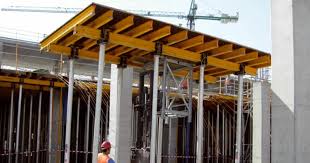ធ្នូ . 29, 2024 17:51 Back to list
Wooden Formwork Manufacturing Facilities and Their Impact on Construction Efficiency
The Evolution of Wood Formwork Factories Crafting the Future of Construction
In the realm of construction, formwork plays an indispensable role in shaping concrete structures. Among the various forms of construction materials utilized, wood formwork has long stood out as a preferred choice for many builders and contractors. Wood formwork factories are at the forefront of this tradition, innovating and adapting to the shifting demands of the construction industry. This article explores the significance of wood formwork factories, their evolution, and their contributions to modern construction practices.
The Importance of Wood Formwork
Wood formwork is primarily employed to create temporary molds into which concrete is poured. Its importance cannot be overstated as it provides the necessary support and shape for the concrete to set and cure correctly. Traditionally, wood has been favored for its availability, ease of handling, and cost-effectiveness compared to other materials like metal or plastic. Furthermore, wood is readily customizable, allowing builders to design formwork that meets specific architectural requirements.
Historical Context
Historically, wood formwork dates back thousands of years, having been used by ancient civilizations to construct monumental structures. The Romans were known for their innovative use of wooden forms to shape their concrete, which has withstood the test of time. With the industrial revolution came the rise of wood formwork factories, which began to streamline the production processes, making it easier and faster to produce high-quality, standardized formwork components.
Modern Advances in Wood Formwork Factories
In today’s fast-paced construction industry, wood formwork factories have had to adapt to the increasing demands for efficiency and sustainability. Automation and advanced manufacturing technologies have transformed traditional production methods. Computer Numerical Control (CNC) machines and automated cutting systems have enabled factories to produce intricate designs with precision, significantly reducing waste and labor costs.
Moreover, many factories are now adopting sustainable practices by sourcing wood from responsibly managed forests. This not only supports environmental conservation but also meets the growing demand for eco-friendly construction solutions. As a result, wood formwork is gaining renewed interest in an industry that increasingly prioritizes sustainability.
wood formwork factories

Customization and Flexibility
One of the standout features of wood formwork is its inherent flexibility. Wood formwork factories are equipped to offer customized solutions that cater to specific project needs. This adaptability is crucial for unique architectural designs that require tailored shapes and sizes. Builders can work closely with factory teams to ensure that their vision is realized without compromising structural integrity.
Additionally, wood formwork’s lightweight nature allows for easy handling and transportation. This quality significantly reduces the time required for assembly and disassembly, thus accelerating the overall construction process. In large projects, where time is money, this efficiency can translate to substantial cost savings.
Challenges Facing Wood Formwork Factories
Despite its advantages, wood formwork is not without challenges. The demand for alternative materials, such as plastic and metal formwork, has increased due to their longer lifespan and recyclability. Wood formwork factories must continually innovate and emphasize the benefits of wood to combat this trend. Additionally, they face challenges related to supply chain sustainability and the need to ensure consistent quality amid global timber shortages.
The Future of Wood Formwork Factories
Looking ahead, wood formwork factories are poised to remain a vital component of the construction industry. The integration of digital technologies, such as Building Information Modeling (BIM), will further enhance the design and production processes. Factories that embrace innovation and commit to sustainability will likely thrive in a competitive marketplace.
As urbanization accelerates and construction demands soar, the role of wood formwork will continue to evolve. The factories dedicated to producing this essential component of construction will play a key role in shaping the future of our built environment. By blending tradition with modern technology, wood formwork factories can foster sustainable and efficient building practices, ensuring that they remain relevant in a rapidly changing industry.
In conclusion, wood formwork factories not only preserve a time-honored construction method but also adapt and innovate to meet contemporary challenges. As they carve their path into the future, the importance of wood formwork in construction will undoubtedly endure, embodying a legacy that balances craftsmanship with modern efficiency.
-
Formwork Spring Clamp Factories: Quality & Bulk Supply
NewsAug.21,2025
-
Premium Ringlock Scaffolding | China Manufacturer & Supplier
NewsAug.19,2025
-
Efficient Table Formwork for Fast Slab Construction & Reusability
NewsAug.18,2025
-
Timber Beam H20 Formwork & Shuttering - Durable & Reliable
NewsAug.17,2025
-
Timber Beam H20: Premium Formwork & Shuttering Solutions
NewsAug.16,2025
-
Premium H20 Timber Beam for Formwork & Slab Shuttering
NewsAug.15,2025